
A hamadryas one-male unit leaving the sleeping site to begin its daily travel route.
| The Filoha Hamadryas Project is a long-term field project in Ethiopia focusing on the behavioral biology of hamadryas baboons. The project is co-directed by Larissa Swedell and Shahrina Chowdhury, and our current postdoctoral associate is Katarina Evans.
Hamadryas baboons (Papio hamadryas) are one of six types of baboons alternately classified as species or subspecies of a single biological species (in which case hamadryas would be Papio hamadryas hamadryas). The Filoha Hamadryas Project is named after the Filoha outpost of Awash National Park (located at the Filoha hot springs, "fil" "wuha" meaning hot water in Amharic) and focuses on the baboons
inhabiting the northern region of the park, north of Mount Fantalle, about 40 km north of the Awash hybrid zone.
The primary focus of our research over the years has been Band 1, numbering about
200. Several other bands also frequent the region, one of which, Band 3, we have also studied intermittently. Each band uses multiple cliffs as sleeping sites, one of which is the cliff located at the Filoha outpost (photo to right and below left). Sleeping sites are scattered throughout their home range, which we now know to be over 100 square kilometers (Henriquez et al., 2021).
| 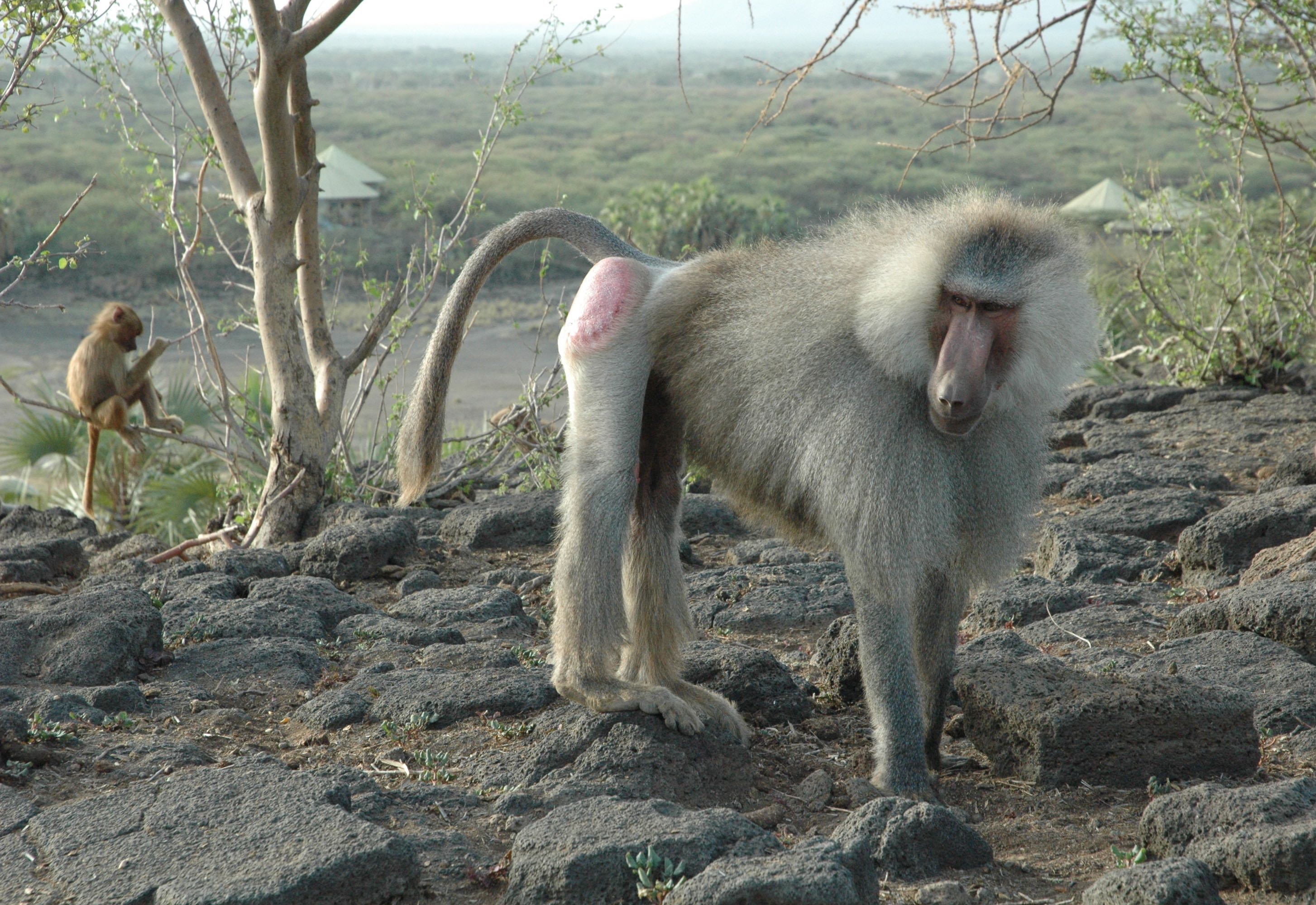
A male and juvenile on top of the Filoha sleeping cliff. The Filoha outpost is in the background.
|
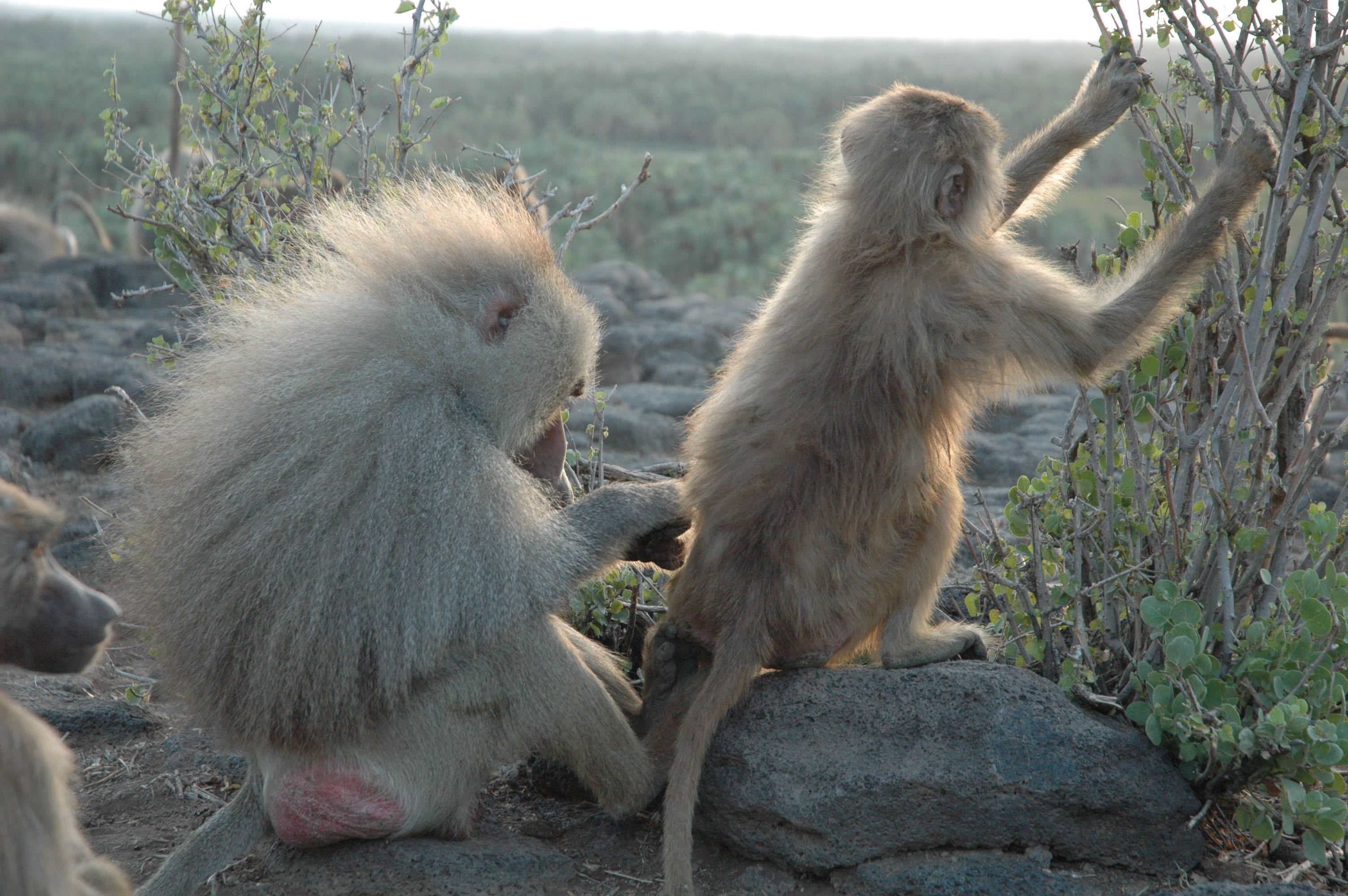
A hamadryas male grooms a female on top of the Filoha sleeping cliff.
|
The Filoha Hamadryas Project began with Larissa Swedell's PhD research in 1996-1998 focusing on hamadryas
behavioral ecology (Swedell 2002b, 2006)
and the reproductive and social strategies of females (Swedell 2000, 2002a, 2006). Work at Filoha since then has continued to elucidate elements of their unusual male-dominated multi-level social system, including
mechanisms of female acquisition and loss (e.g., Pines et al., 2011, 2015; Swedell & Schreier 2009; Pines & Swedell 2011; Swedell et al., 2011),
the relationship between ecology and social grouping patterns (e.g., Swedell et al, 2008; Schreier 2010; Schreier & Swedell 2009, 2012a,b; Henriquez et al., 2021),
modes of dispersal (Swedell et al., 2011; Staedele et al., 2015), and patterns of kinship within and among social units (Staedele et al., 2015, 2016). Research at Filoha has played a crucial role in highlighting the importance of baboons in general, and hamadryas baboons in particular, in contributing to models of hominin social evolution (Swedell & Plummer 2012, 2019).
| 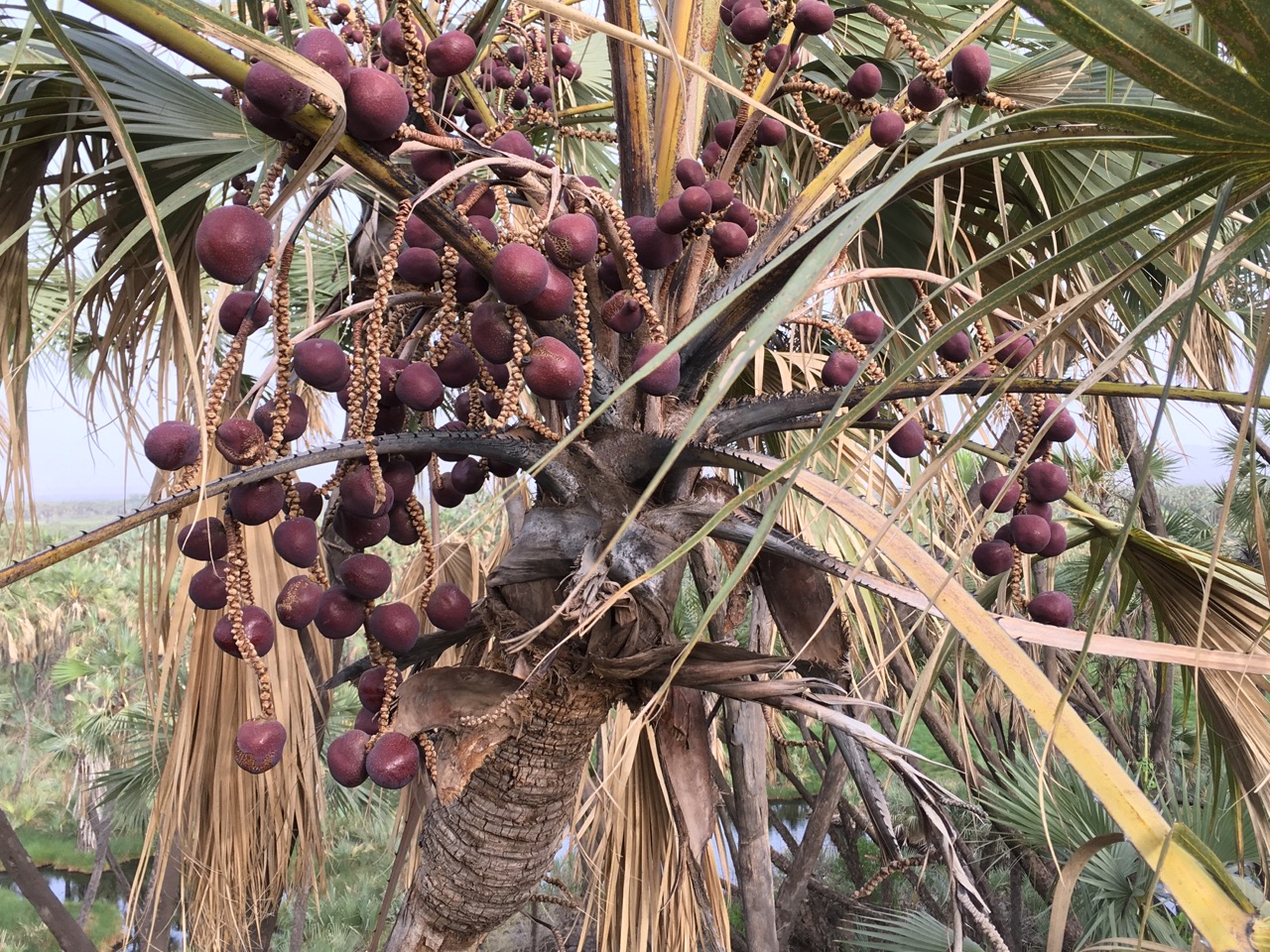
The doum palm (Hyphaene thebaica), the main food source of the Filoha baboons.
|
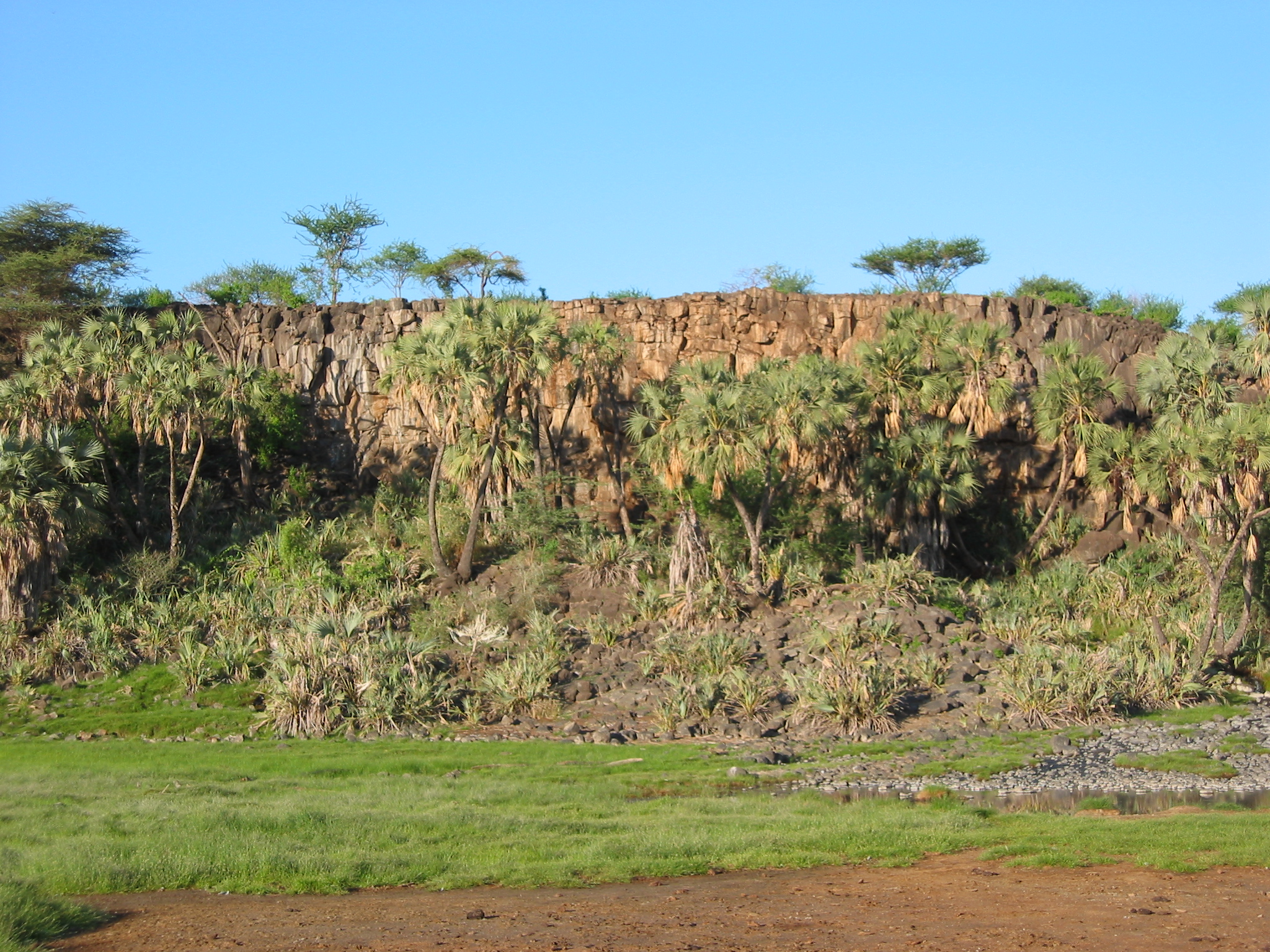
The Filoha sleeping cliff.
|
Most recently, our team has been focusing on (1) sexual conflict, in
particular the coercive behavior of hamadryas males, its costs for
females, and ways in which females might mitigate these costs (Swedell et
al., 2014; Amann et al., 2017; Evans et al., 2022); and
(2) the adaptive value of social
relationships in hamadryas society, including the ways in which leader males may benefit from the presence of
follower males in their units (Chowdhury et al., 2015). We have also collaborated with members of other research teams on the use of agent-based modeling to elucidate the evolution of hamadryas social organization (Ekanayake-Weber & Swedell 2021), comparative functional morphology to shed light on hominin diets (Fannin et al., 2023), and comparisons of reproductive seasonality across baboon populations to elucidate behavioral flexibility (Dezeure et al 2024).
While active data collection at Filoha has been temporarily suspended due to the COVID-19 pandemic and the Ethiopian Civil War, we welcome collaborations using our existing data sets. If you are interested in collaborating with the Filoha Hamadryas Project, please contact Larissa Swedell and Shahrina Chowdhury.
For a list of publications from research at Filoha, click here.
| 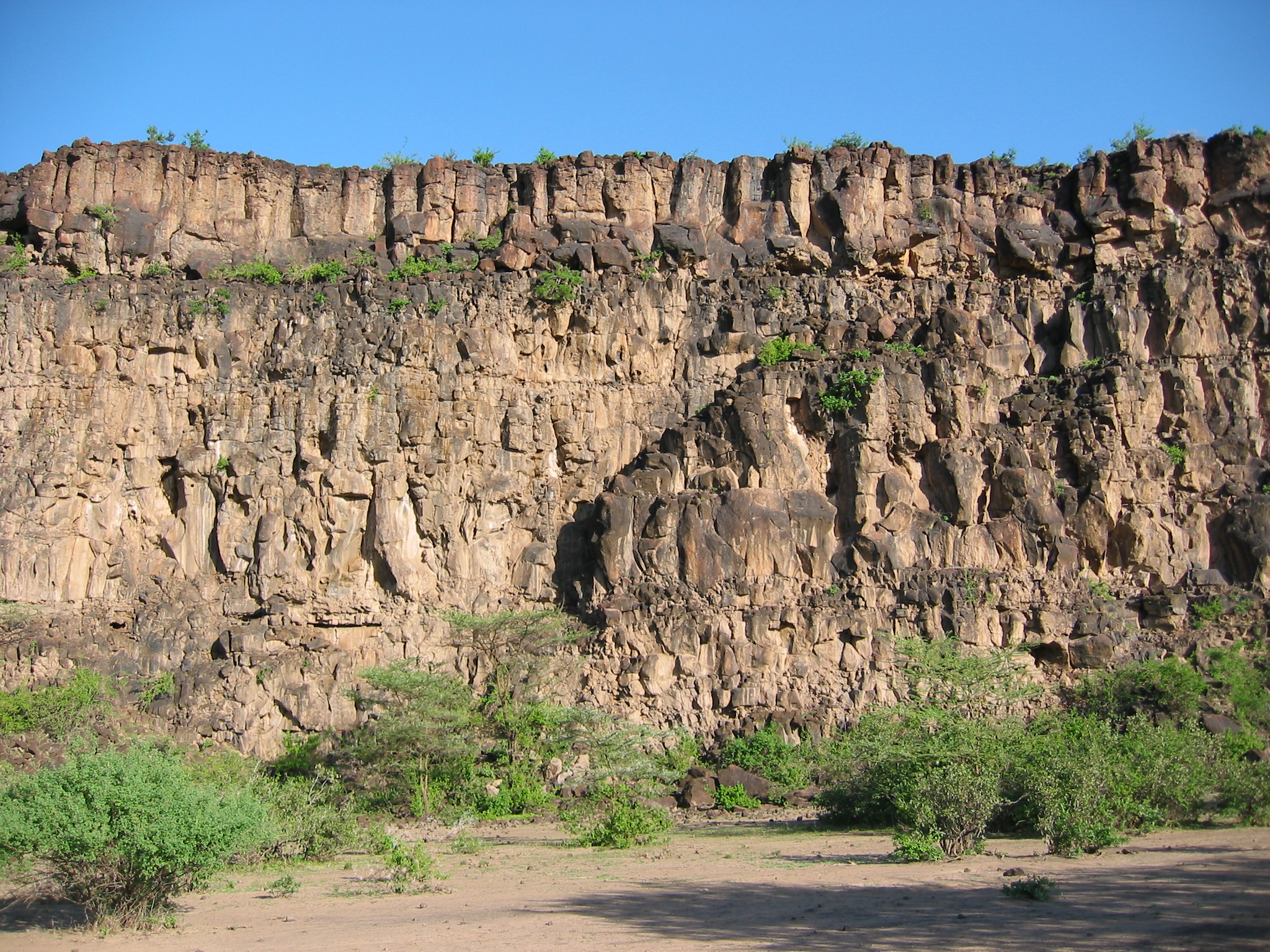
The Wasaro sleeping cliff. |
|
|
|







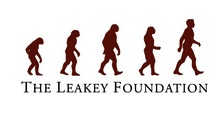
 This work is licensed under a
This work is licensed under a